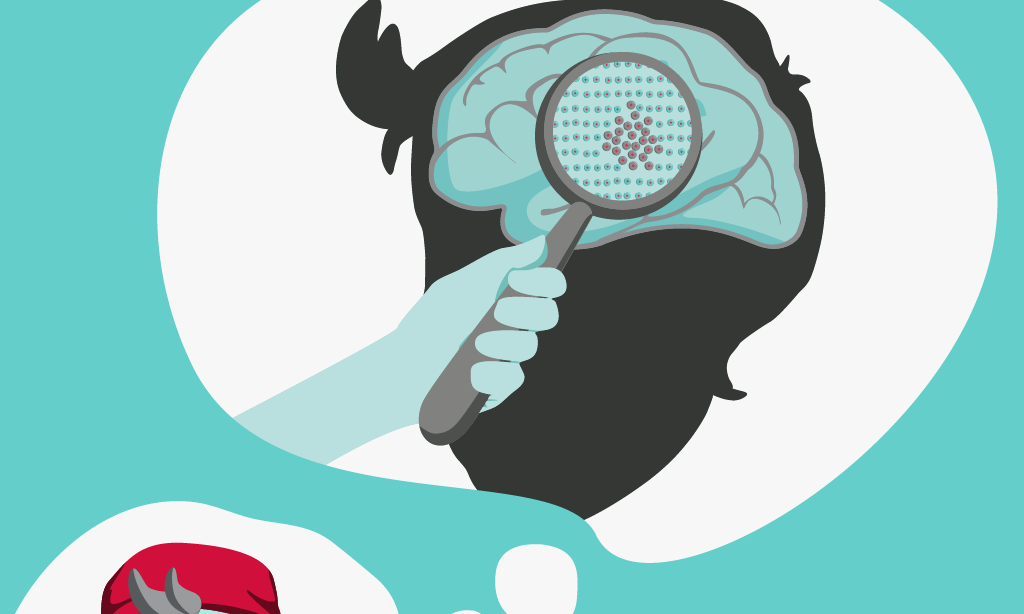Brainstem glioma
A brainstem glioma is a type of brain tumour that grows in the brain stem, which joins the brain to the spinal cord. These tumours affect both children and adults, but are more common in children.
On this page:
- What is a brainstem glioma?
- What are the types of brainstem glioma?
- What are the brainstem glioma symptoms?
- What causes a brainstem glioma?
- How are brainstem gliomas treated?
- What is the brainstem glioma prognosis?
Get support
It’s normal to feel shocked if you or someone you know has been diagnosed with a brain tumour. Our Support Team can answer questions you have or provide a listening ear if you need one.
Get your free Information Pack
Our Brain Tumour Information Pack can help you better understand your diagnosis and feel confident talking to your medical team.
Join our online support groups
Our online support groups are a great place to connect with other people affected by a brain tumour.
What is a brainstem glioma?
Brainstem gliomas are tumours which develop from glial cells within the brain stem.
The brain stem is the lowest part of the brain, at the back. It joins the brain to the spinal cord. It is responsible for many vital body functions that we don’t need to think about. For example, motor skills, sensory activity, coordination and walking, the beating of the heart, and breathing.
Brainstem gliomas are more often diagnosed in children and young adults under the age of twenty. But, these tumours can affect older adults as well.
What are the types of brainstem glioma?
Childhood brainstem gliomas are often classified as either:
Focal brainstem glioma. These are low grade gliomas that form in an area of the brain stem outside of the pons.
Diffuse midline glioma. These are diffuse, high grade tumours in the part of the brain stem called the pons. These are faster growing and tend to spread into the surrounding brain tissue.
What are the brainstem glioma symptoms?
The symptoms of a brain tumour depend on its location and which areas of the brain or nervous system it affects. So, your child’s symptoms might be different from another child’s.
But, here are a few of the common symptoms of a brainstem glioma:
- Headaches. These might be worse in the morning or after lying down. This is because they’re caused by the buildup of cerebrospinal fluid (CSF) in the brain (called hydrocephalus).
- Movement and coordination problems. Your child may have difficulty walking, using their hands or could become unusually clumsy.
- Facial nerve problems. These could include drooping eyelids, a crooked smile or difficulty moving the eyes.
- Trouble chewing or swallowing
- Slurred speech or difficulty speaking clearly
- Nausea or vomiting. This might happen more often in the morning or after physical activity.
What causes a brainstem glioma?
Most brain tumours don’t have a known cause, so there’s no way to prevent them from happening.
But, some brainstem gliomas can be caused by a genetic condition called neurofibromatosis type 1 (NF1).
If you or your child have this, you’ll likely have doctors who specialise in this condition, and they’ll work together with your healthcare team to give you the best options for brain tumour treatment.
How are brainstem gliomas treated?
Surgeons can occasionally operate on focal tumours to remove some of the tumour, but usually surgery is not an option for brainstem gliomas.
This is due to their delicate location where operating could do more harm than good.
Because of this, healthcare professionals usually treat brainstem gliomas with chemotherapy and radiotherapy.
What is the brainstem glioma prognosis?
We understand that prognosis might be difficult to approach right now. Please only click the drop-down if you are ready for this information.
-
Brainstem gliomas cover a wide range of tumours. So, it’s difficult to give an overall prognosis for everyone.
Your individual prognosis depends on the tumour’s location and grade, as well as other factors like genetics and overall health.
That being said, we can provide an average prognosis for the main types of brainstem glioma.
For low-grade focal brainstem gliomas, the prognosis is often hopeful, with many patients surviving for years, especially if surgery is successful in removing as much of the tumour as possible.
For diffuse midline glioma (DIPG), the prognosis is sadly not promising, with average life expectancy being less than a year.
To learn more, click the link below.

Join our community on Facebook
Our closed Facebook group for parents is a great place to connect with other parents affected by a brain tumour and share your experiences.
Support and Information Services
Research & Clinical Trials Information
You can also join our active online community.
In this section

Get support
If you need someone to talk to or advice on where to get help, our Support and Information team is available by phone, email or live-chat.
Get your free Brainy Bag
Our Brainy Bag is a free gift for children and young people who have been diagnosed with a brain tumour, made up of a range of handpicked toys and activities!
Recommended reading
Share your experiences and help create change
By taking part in our Improving Brain Tumour Care surveys and sharing your experiences, you can help us improve treatment and care for everyone affected by a brain tumour.
